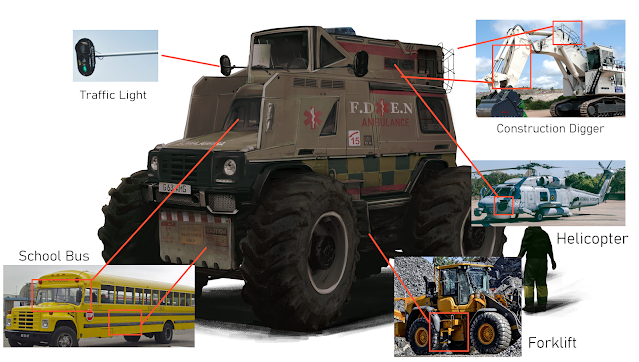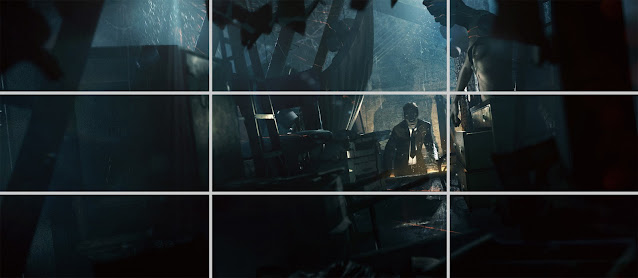With everything in place,
adjustments made and details created, I can call my backyard slice finished.
This was a bit of a challenge in terms of approaching all these new methods and
workflows to create PBR materials- the majority of work I’d made prior was all
hand painted, diffuse only models. It took a bit to fully understand what each
map type does, how they work together and how to create a balance between them
so that the material doesn’t look over zealous and it harmonises with all the
other materials in the scene. Creating this scene took a lot of back and forth,
doing and redoing to find methods I thought worked efficiently and also create
a look that was aesthetically pleasing.

1 thing that learnt from doing
this project was Substance Designer as a whole program (I’d never used it prior
to this). Learning how to procedurally create textures was a very interesting
process since I’m so used to just using Photoshop and painting whatever
material I needed. Seeing what each node does and how they all work together
was fun to experiment with and being able to change just a few nodes to alter
the entire look of my final material was definitely useful in quickly
generating textures. Definitely a lot faster than having to repaint it
entirely.
Things I felt went particularly
well with this project were my approach to using UE4 and my sculpting in
Zbrush. Although I didn’t do anything extremely complex in Unreal I feel a lot
more confident in creating materials and altering them using various nodes and
also setting up a scene to look good via lighting and post processing. I’d done
quite a lot of research into the aesthetics of Unreal, looking at artists like
Henric Montelius and Jasmin Habezai-Fekri to understand what makes their Unreal
artwork so organic and how I could bring that into my scene. I feel as though
the experimentation was worthwhile and the final scene looks really nice! I could
definitely go further with more time and practice but for what I’ve done I
think I’ve done well.

With my sculpting I feel as though
it worked well mainly due to the stylistic approach I was going with for my
whole scene. The details on my sculpts were subtle and most objects were smooth
and even across the surface. If I were going for a more realistic style I feel
as though I wouldn’t have been able to convey it well enough since I hadn’t
used Zbrush all that much. That coupled with figuring out PBR materials, it
most likely just wouldn’t have looked that great. Keeping it simple was better
for my learning and I would be able to create an outcome that was achievable
and looked good. I think I was able to carry out a cohesive style well across
my sculpts and I can take my knowledge further now in other projects to create
more complex sculpts.

That being said, I feel as though
technically I could’ve done better on my topology management, specifically for
retopology. Understanding what makes decent topology is definitely something I
need to look more into, some models could stand to be retopologized more evenly
and make for a more efficient use of tris. I think I was overly concerned on whether
the high poly would bake well onto the low poly that I created unnecessary
topology that wasn’t good from a technical stand point. I aim to improve my
approach to retopologizing in future projects or see if a workflow of creating
a low poly mesh before creating the high poly would be a better fit.
Overall, I like how my final scene came out.
There were a lot of learning curves with this project that probably made me
spend too much time on certain parts and not enough time on others, but with
all individual parts coming together I think it looks pretty decent. I’ve learnt
a lot from experimenting with this and I’ve got a lot of new knowledge that I’ll
be taking forwards into future projects (not just for environments but
characters too!).










































